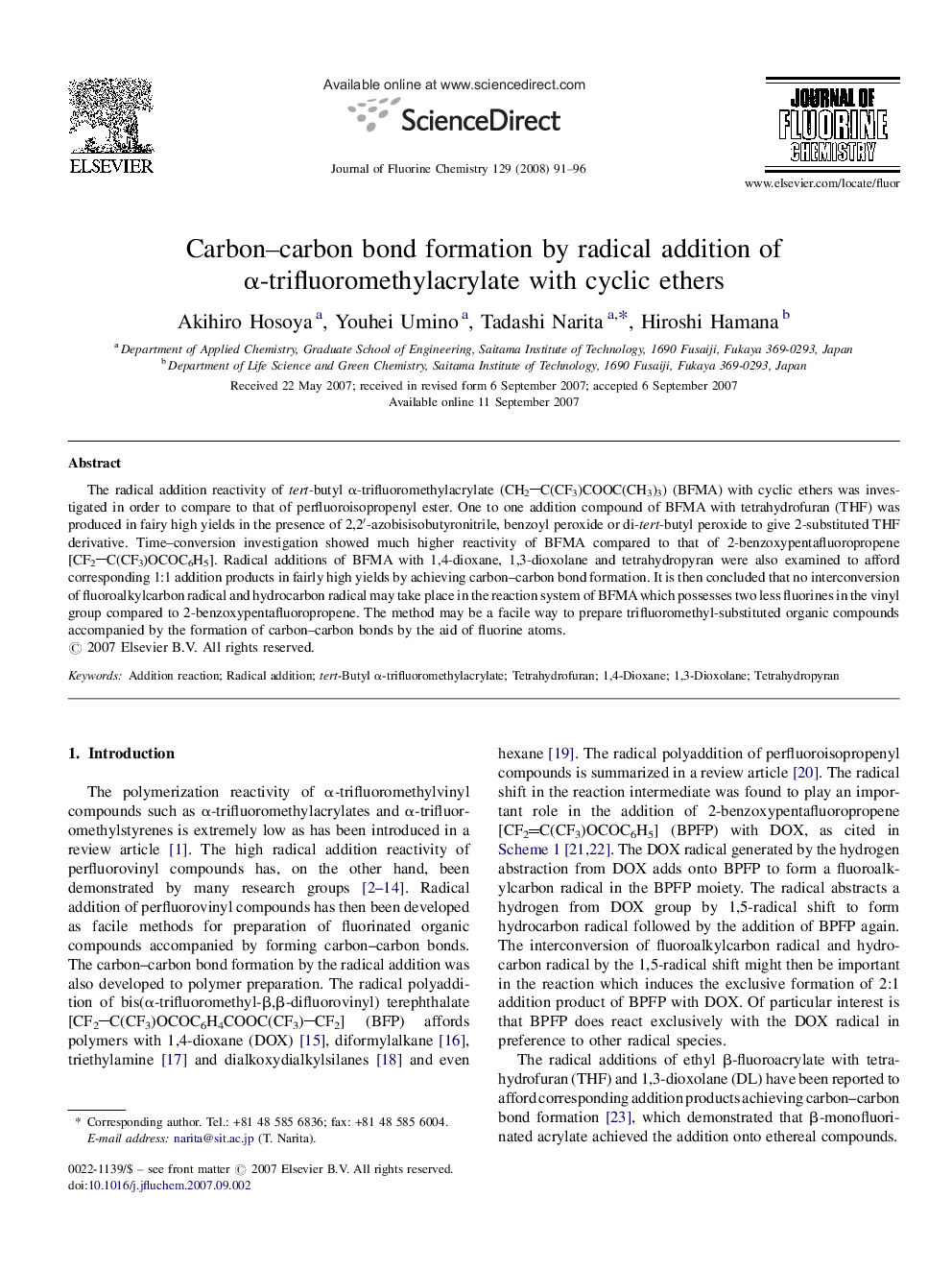| Article ID | Journal | Published Year | Pages | File Type |
|---|---|---|---|---|
| 1315517 | Journal of Fluorine Chemistry | 2008 | 6 Pages |
The radical addition reactivity of tert-butyl α-trifluoromethylacrylate (CH2C(CF3)COOC(CH3)3) (BFMA) with cyclic ethers was investigated in order to compare to that of perfluoroisopropenyl ester. One to one addition compound of BFMA with tetrahydrofuran (THF) was produced in fairy high yields in the presence of 2,2′-azobisisobutyronitrile, benzoyl peroxide or di-tert-butyl peroxide to give 2-substituted THF derivative. Time–conversion investigation showed much higher reactivity of BFMA compared to that of 2-benzoxypentafluoropropene [CF2C(CF3)OCOC6H5]. Radical additions of BFMA with 1,4-dioxane, 1,3-dioxolane and tetrahydropyran were also examined to afford corresponding 1:1 addition products in fairly high yields by achieving carbon–carbon bond formation. It is then concluded that no interconversion of fluoroalkylcarbon radical and hydrocarbon radical may take place in the reaction system of BFMA which possesses two less fluorines in the vinyl group compared to 2-benzoxypentafluoropropene. The method may be a facile way to prepare trifluoromethyl-substituted organic compounds accompanied by the formation of carbon–carbon bonds by the aid of fluorine atoms.
Graphical abstractThe radical addition reactivity of tert-butyl α-trifluoromethylacrylate (CH2C(CF3)COOC(CH3)3) (BFMA) with cyclic ethers was investigated in order to compare to that of perfluoroisopropenyl ester. One to one addition compound of BFMA with tetrahydrofuran (THF) was produced in fairy high yields in the presence of 2,2′-azobisisobutyronitrile, benzoyl peroxide or di-tert-butyl peroxide to give 2-substituted THF derivative. Time–conversion investigation showed much higher reactivity of BFMA compared to that of 2-benzoxypentafluoropropene [CF2C(CF3)OCOC6H5]. Radical additions of BFMA with 1,4-dioxane, 1,3-dioxolane and tetrahydropyran were also examined to afford corresponding 1:1 addition products in fairly high yields by achieving carbon–carbon bond formation. It is then concluded that no interconversion of fluoroalkylcarbon radical and hydrocarbon radical may take place in the reaction system of BFMA which possesses two less fluorines in the vinyl group compared to 2-benzoxypentafluoropropene.Figure optionsDownload full-size imageDownload as PowerPoint slide
